Scourie Mor
Geological Conservation Review site | GCR #2459 | Structural and Metamorphic Geology | Lewisian
Geological Conservation Review site | GCR #2459 | Structural and Metamorphic Geology | Lewisian
Scotland's geosites are chosen because of their local, national or international importance. Take only photos, leave only footprints: avoid causing any damage to this site. You can walk almost anywhere in Scotland without the need to ask permission or keep to paths, but you have a responsibility to care for your own safety, to respect people's privacy and peace of mind and to cause no damage.
This site is a Site of Special Scientific Interest (SSSI). It is an offence to intentionally or recklessly damage the protected natural features of a SSSI, and this includes unauthorised sample collection.
The right of access does not extend to quarries, building sites or any land where public access is prohibited, or to the collection of geological samples.
Classic outcrops of the assemblages of gneisses and igneous rocks that constitute the oldest part of the continental crust of this part of Europe. Used to train generations of geologists in unravelling the metamorphic structural and igneous processes that create continental crust.
This site is one of the better exposed and preserved areas of Scourian granulite facies gneisses. The gneisses (ranging from acid to ultrabasic in composition) have only suffered minor amounts of later deformation and retrogression. Acid gneisses consist of quartz- plagioclase-hypersthene-augite. In the basic gneisses quartz is uncommon, and plagioclase is often surrounded by granular augite with adjacent grains of hypersthene; garnets are common as small rims between plagioclase and hypersthene, and as large porphyroblasts; brown hornblende varies in amount. Ultrabasic gneisses consist of olivine, enstatite, augite and brown pargasitic hornblende. These assemblages provide a record of the early Scourian metamorphic history, and application of geothermometric-geobarometric methods indicates that temperatures of 1,200 degrees centigrade and pressures at 15kb may have existed during their formation. The granulite facies assemblages are crosscut by the later Scourian pegmatites.
Access to the classic area around Cleit Mor involves a walk across open countryside. Please take care with gates. Parking is available near the village school and in the lane running from the main road, but please do not occupy parking at the school itself on school days!
https://www.youtube.com/watch?v=046pn1gOGH0
Short video tour of the classic outcrops at Cleit Mor
There are no safety notes yet.
There are no site highlights yet.
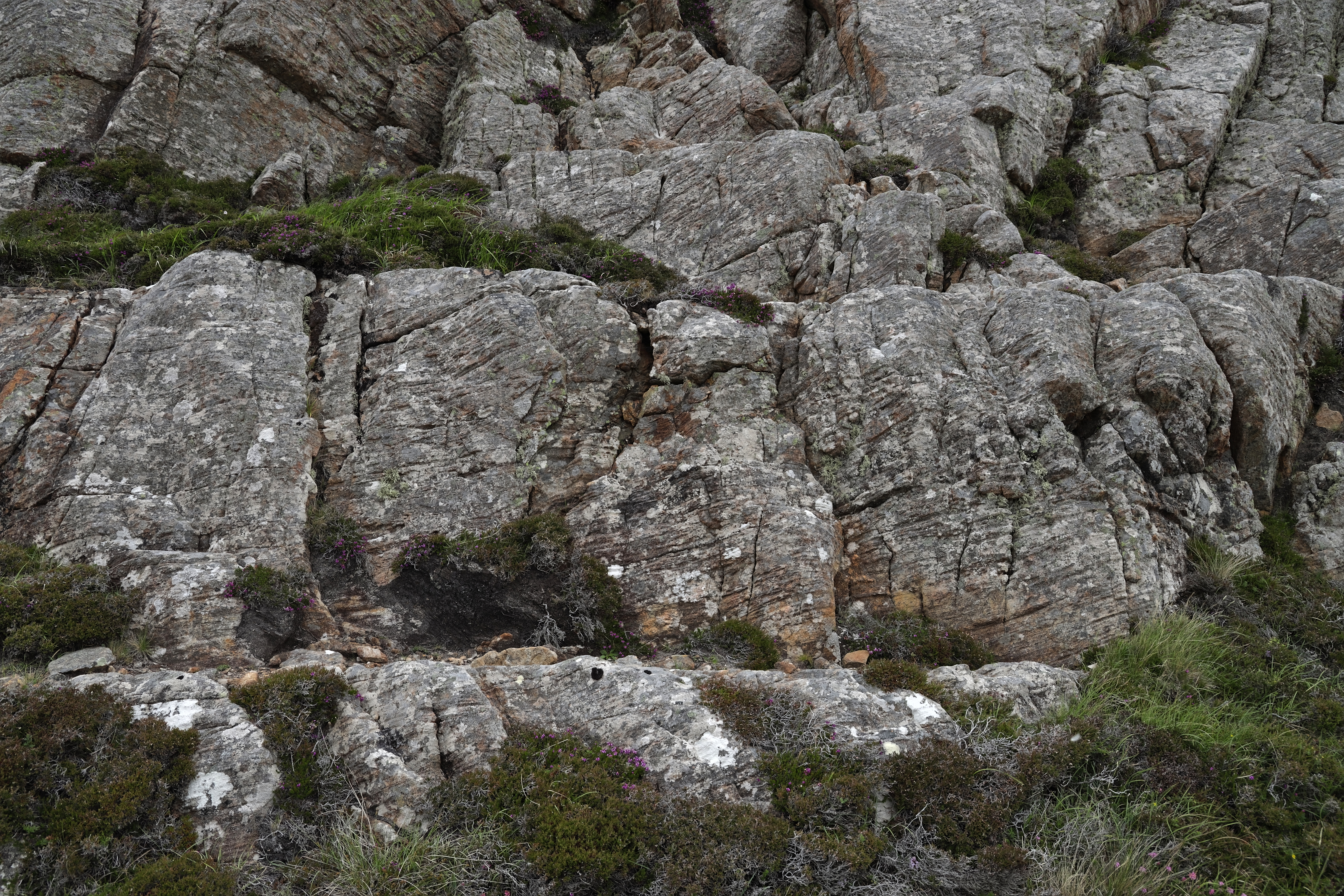
Ultramafic Gneiss, Scourie Mor
Alex Gabriel
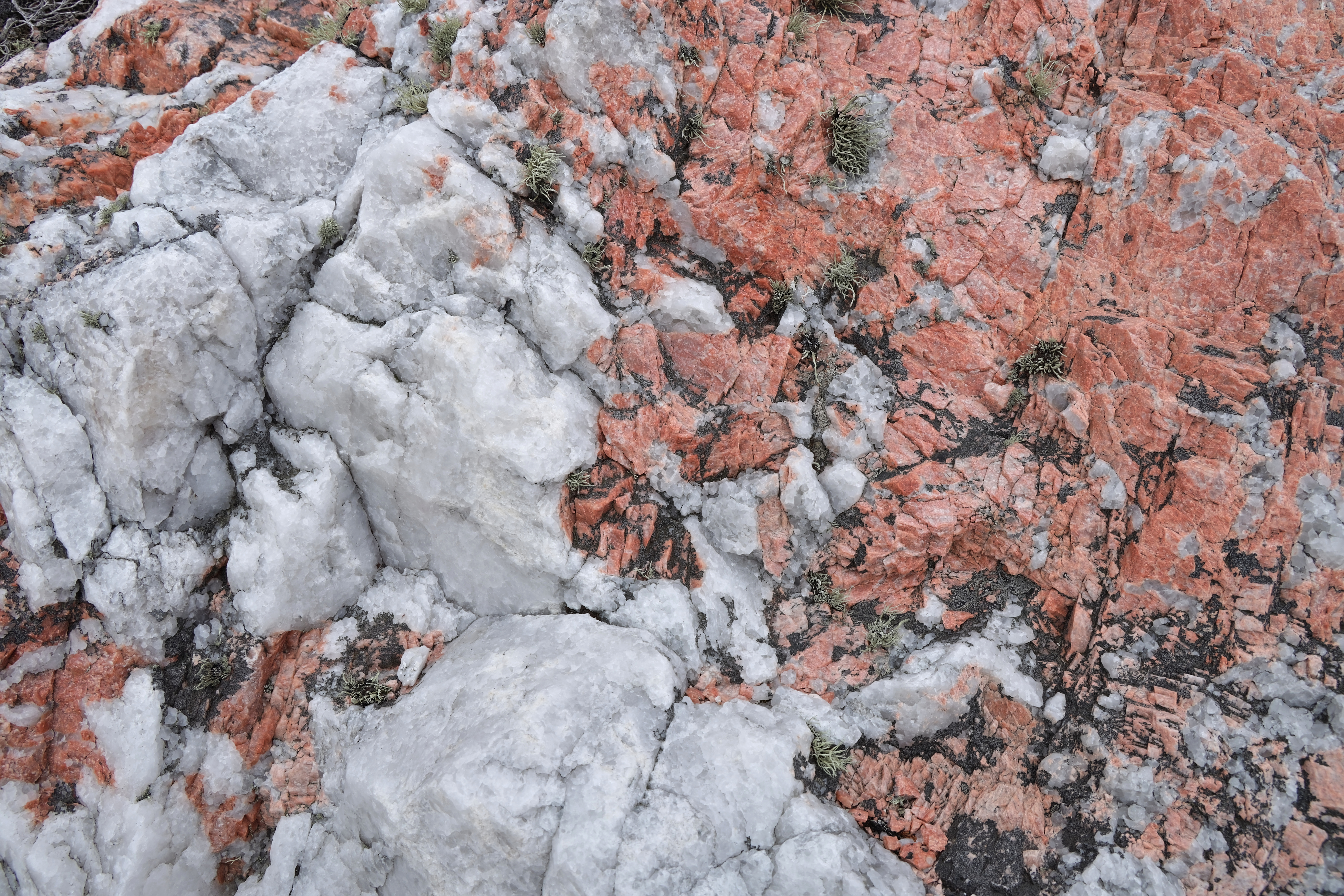
Detail of the pegmatite outcrop at Cleit Mor, Scourie Mor.
Alex Gabriel
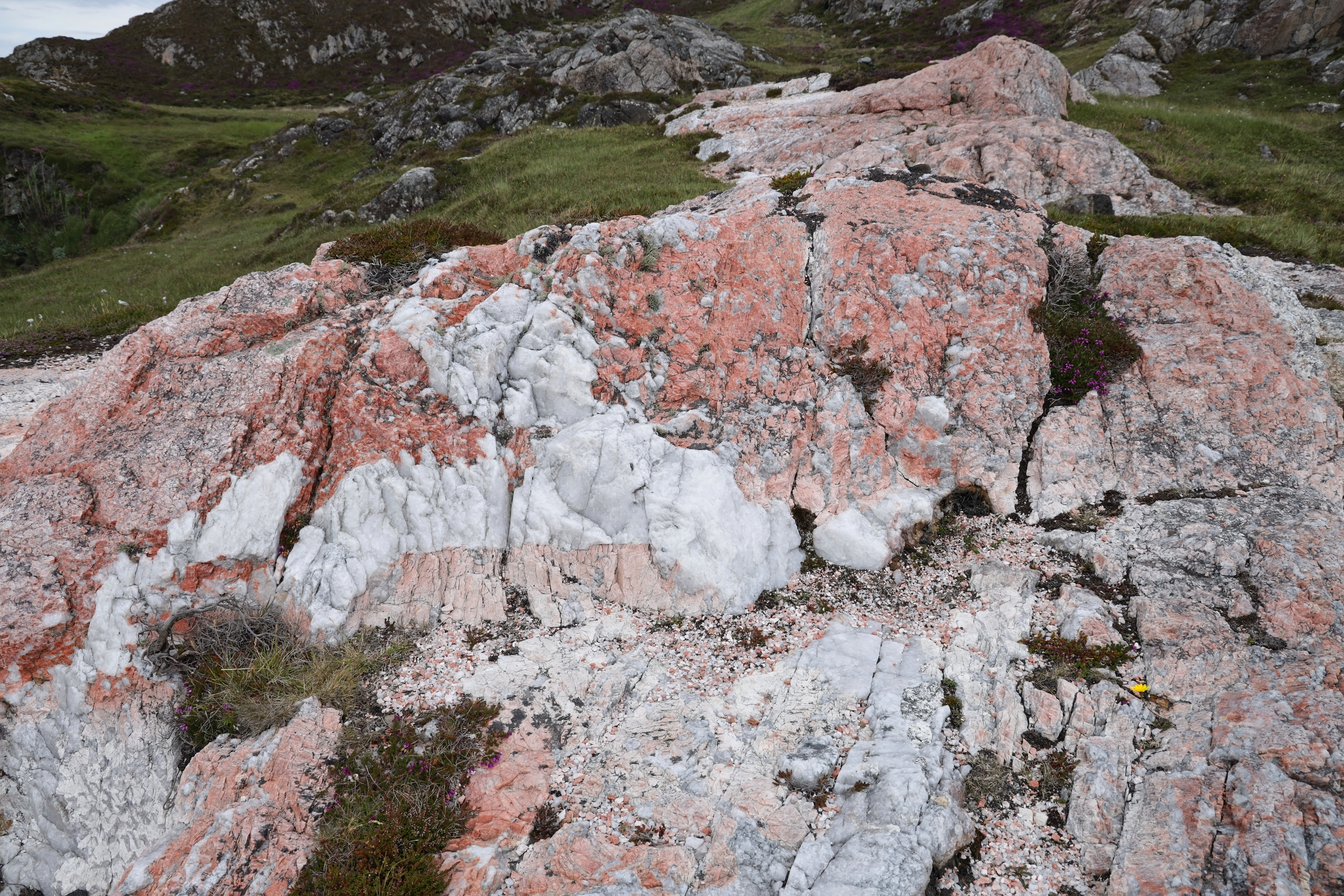
Close-up view of the pegmatite outcrops at Cleit Mor, Scourie Mor.
Alex Gabriel

Mafic enclave in Lewisian Gneiss, Scourie Mor
Alex Gabriel
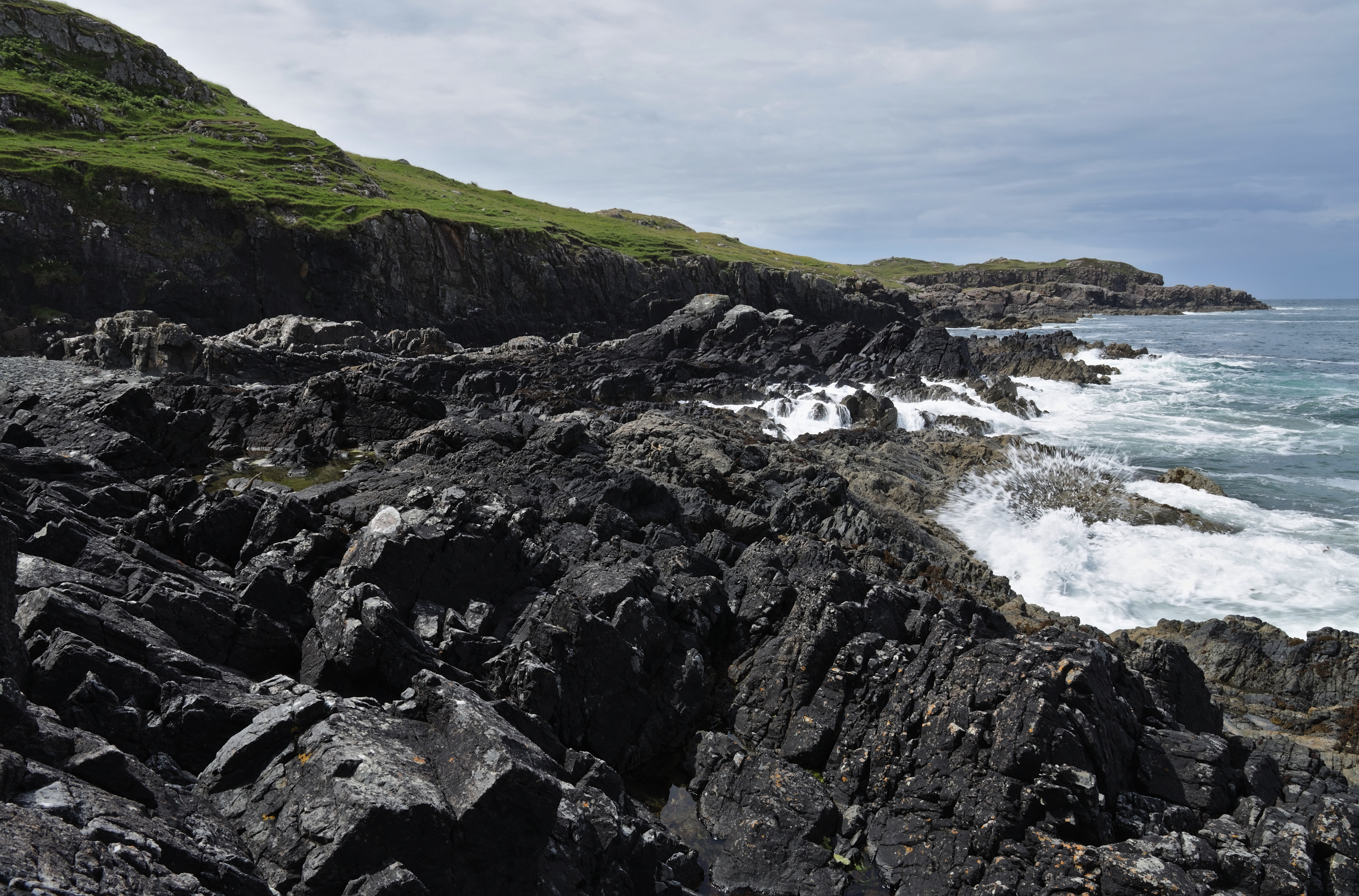
The Graveyard Dyke, Scourie Bay
Alex Gabriel
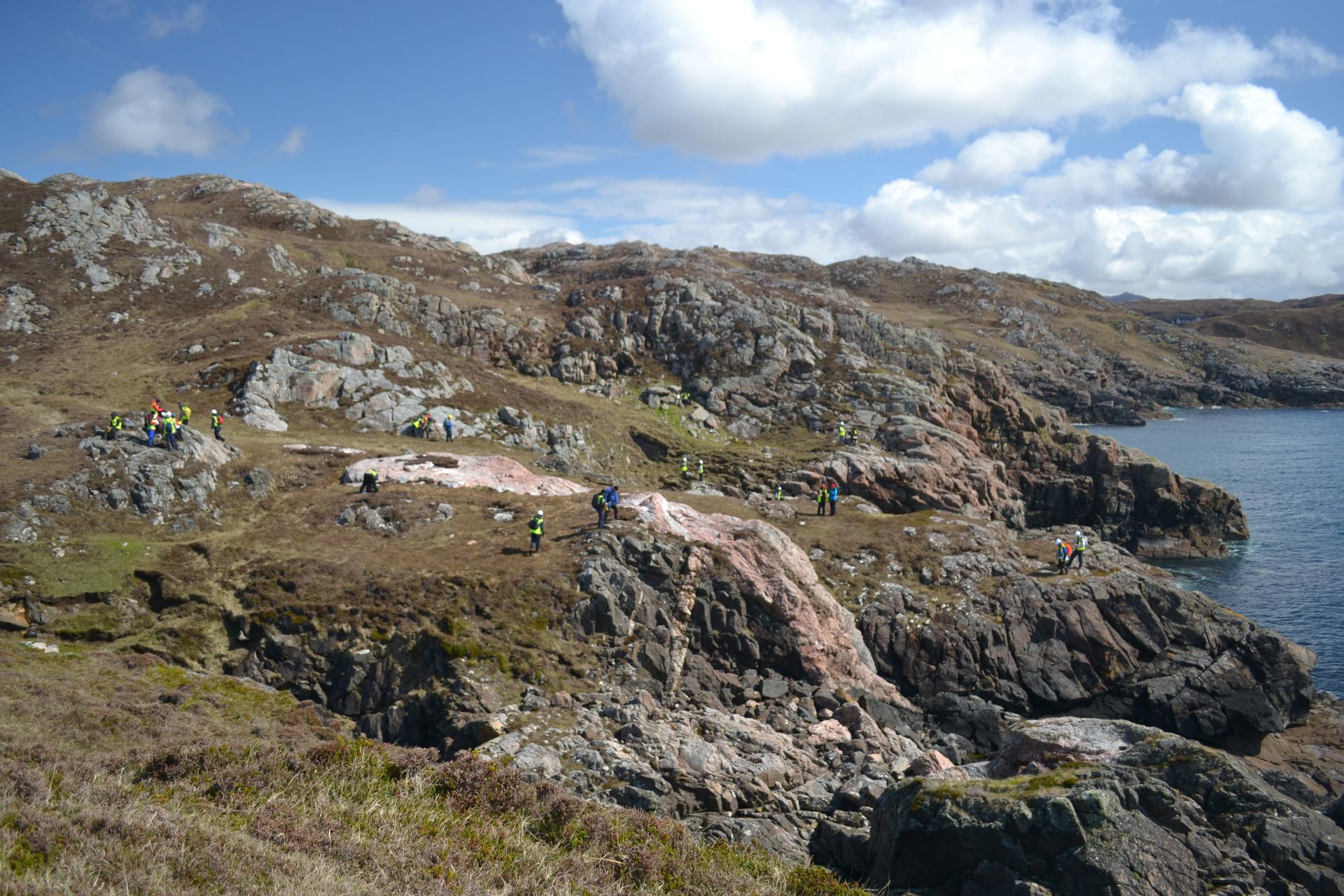
The outcrops at Cleit Mor, Scourie Mor showing Archean granulite-facies gneisses intruded by pegmatites.
Rob Butler
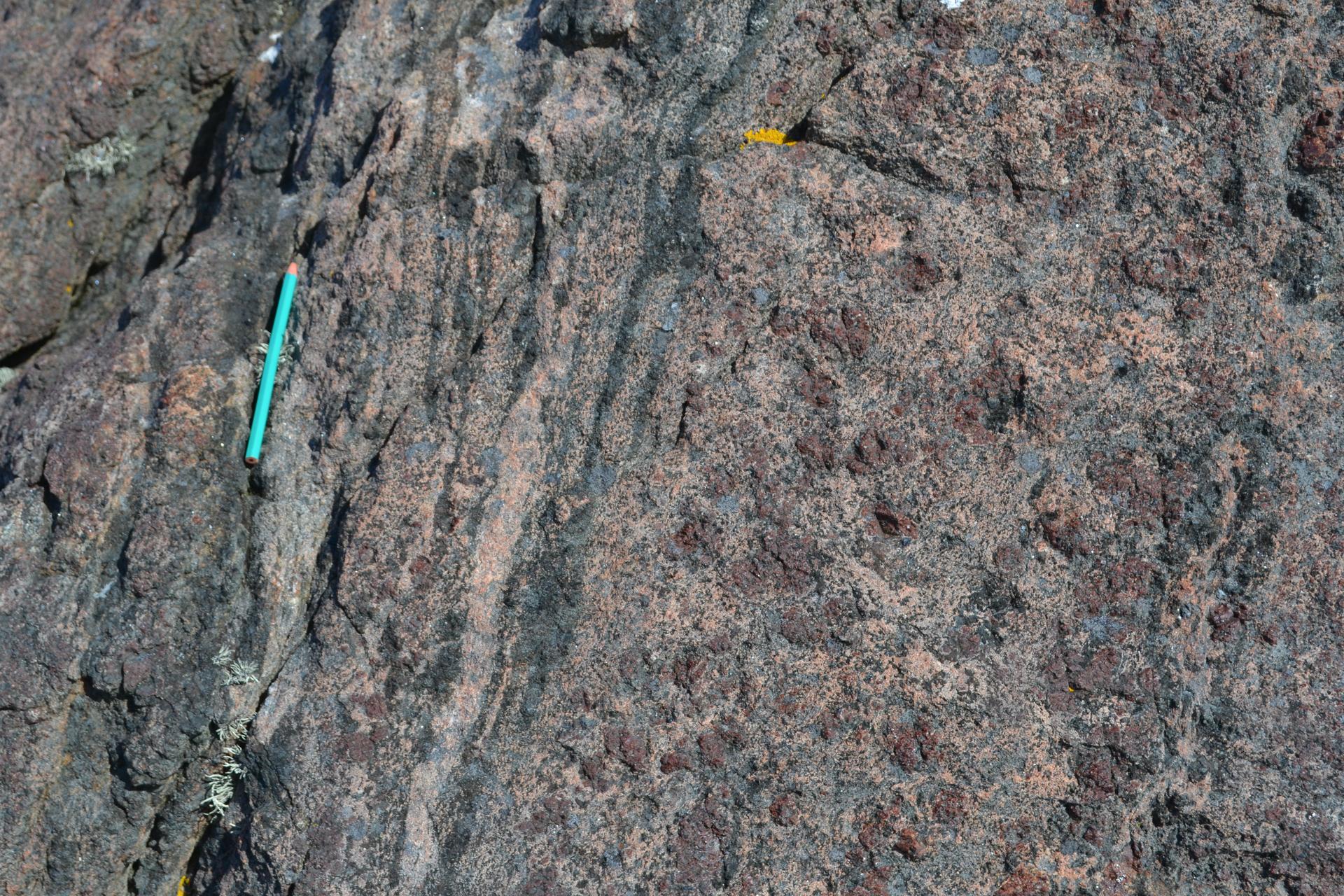
Coarse-grained garnet granulites at Cleit Mhor
Rob Butler
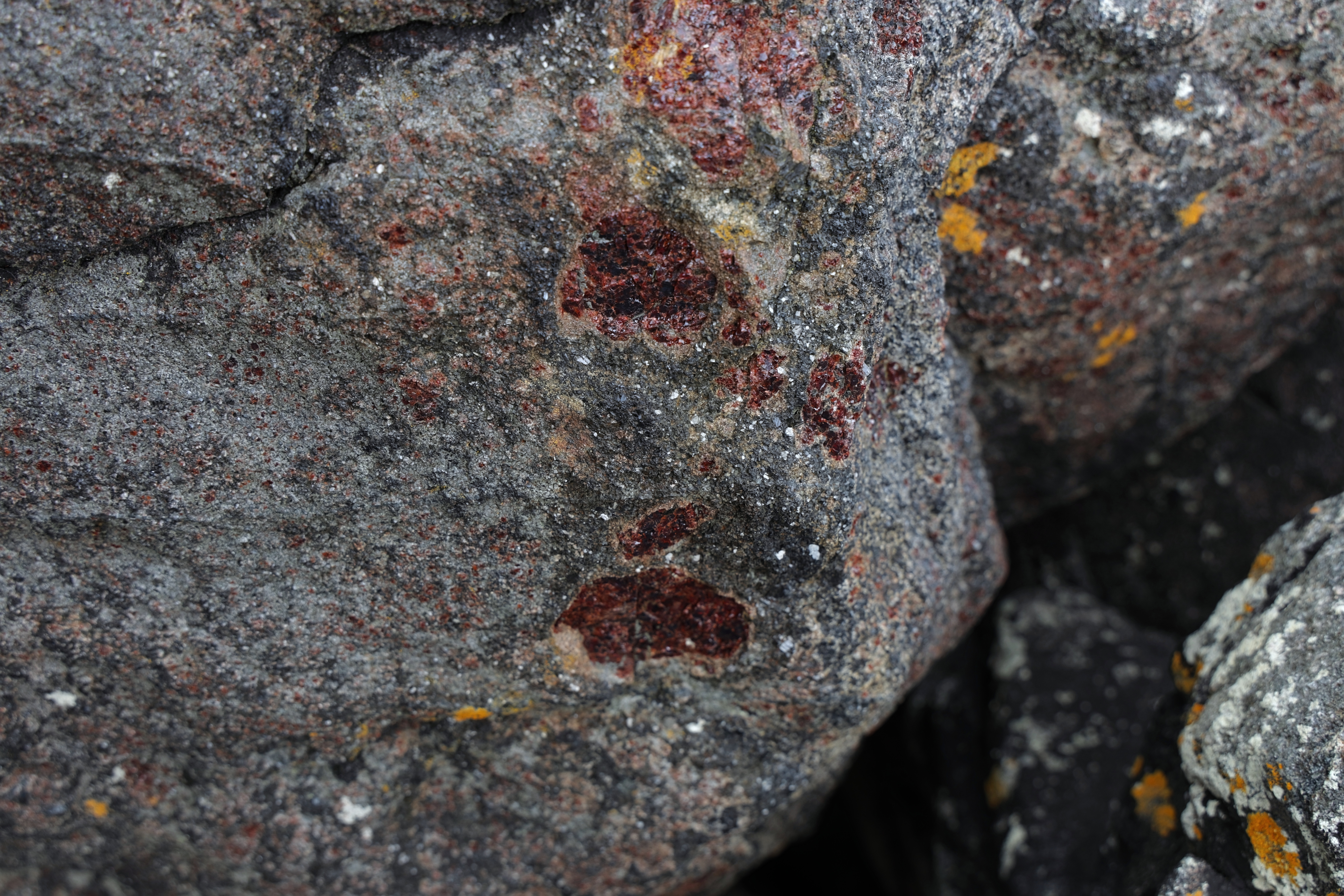
Garnet granulites, Cleit Mor
Alex Gabriel